1 Notes – Boater Responsibilities
Course: Basic Navigation & Boat Handling V7 (2024) Book:Notes – Boater Responsibilities
Printed by: Janet Fraser
Date:Thursday, 1 August 2024, 11:21 PM
Overview
- Laws & Regulations
- Operator and Vessel Requirements
- Drugs and Alcohol
- Mandatory Equipment
- Charts – Types and Requirements
- Seaworthiness of Vessel
- Radio Usage and Equipment Requirements
Pre-Departure
- Check List
- Fuel
- Refuelling Procedures
- Fuel Burning Appliances
- Fuel Fittings and Ventilation
- Safety and Comfort of Crew and Passengers
- Preparing and Filing a Trip Plan
Underway
- Navigation and Safe Operations while Underway
- Operating Rules of the Waterways
- Hazards
- Effects of Wake
- Safety and Security of Your Vessel
Managing Emergencies While Underway
1.4.2 Medical Emergencies
- Adverse Weather
1.4.3 Fire Onboard the Vessel
1.4 4 Collisions and Groundings
1.4.5 Towing
1.4.7 Emergency Communications
Special Purpose Craft
- Sport Fishing and Hunting Craft
- Towing a Water Skier
- Personal Watercraft (PWC)
- Windsurfers, Kayaks, Paddle-boards, and Dinghies
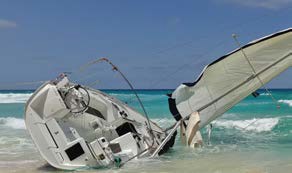 Canada’s vast coastlines, extensive river systems and abundance of lakes make boating an exceptionally popular activity. Unfortunately, many serious injuries and deaths occur each year, many of which could have been avoided through proper preparation.
Canada’s vast coastlines, extensive river systems and abundance of lakes make boating an exceptionally popular activity. Unfortunately, many serious injuries and deaths occur each year, many of which could have been avoided through proper preparation.
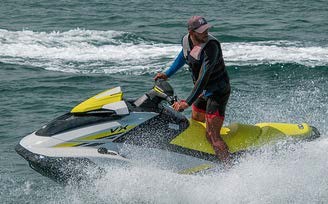 Canadian Red Cross (CRC) statistics show that there are approximately 500 water-related fatalities annually with boating related incidents accounting for approximately one third of this total.
Canadian Red Cross (CRC) statistics show that there are approximately 500 water-related fatalities annually with boating related incidents accounting for approximately one third of this total.
Enforcement officials from several jurisdictions throughout Canada conclude that contributing factors in the accident statistics are:
 not wearing a life jacket
not wearing a life jacket
 a lack of understanding and compliance with safety rules
a lack of understanding and compliance with safety rules  lack of training and a lack of knowledge of regulations
lack of training and a lack of knowledge of regulations
 effects of alcohol and drug consumption while operating a boat
effects of alcohol and drug consumption while operating a boat
A lack of vessel operator knowledge and compliance with vessel operation and safety rules was often the underlying cause behind many of these injuries or fatalities.
This section will help you better:
 understand vessel and equipment requirements
understand vessel and equipment requirements  prepare your vessel and crew for departure
prepare your vessel and crew for departure
 safely operate your vessel while on the water
safely operate your vessel while on the water
Your responsibilities start before you leave the dock until you safely return.
To this end, CanBoat / NautiSavoir offer our membership and the Canadian boating community throughout Canada:  a wide variety of safety, navigation and environmental training course materials
a wide variety of safety, navigation and environmental training course materials
 multiple delivery modes – online, classroom, and self-study
multiple delivery modes – online, classroom, and self-study
Responsible Boat Operation
courtesy of Canada Safe Boating Council
This section sets out the legal and regulatory requirements applicable to pleasure craft. Since most legislation refer to owners or operators and these vessels as pleasure craft, this name will be used interchangeably with the terms vessels, boats, or watercraft throughout this course.
Explanations of the rules and guidance on meeting these requirements is also included.
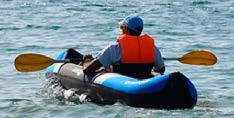 Similar to the responsibilities of maintaining and operating a motor vehicle on public highways, the owner/operator of a pleasure craft is responsible for the maintenance and safe operation of the pleasure craft and the safety of those onboard.
Similar to the responsibilities of maintaining and operating a motor vehicle on public highways, the owner/operator of a pleasure craft is responsible for the maintenance and safe operation of the pleasure craft and the safety of those onboard.
 Understanding of these responsibilities and exercising prudence is not only expected, it’s the law.
Understanding of these responsibilities and exercising prudence is not only expected, it’s the law.
There are a number of laws and regulations for pleasure craft operators. The summary below is taken from the Safe Boating Guide (select your language and the PDF will download) published by Transport Canada.
The Canada Shipping Act, 2001 is the law that, along with its regulations, are applicable to vessels, including pleasure craft. These include:  Competency of Operators of Pleasure Craft Regulations
Competency of Operators of Pleasure Craft Regulations
 Small Vessel Regulations
Small Vessel Regulations  Collision Regulations
Collision Regulations
 Vessel Operation Restriction Regulations
Vessel Operation Restriction Regulations
 Vessel Pollution and Dangerous Chemicals Regulations
Vessel Pollution and Dangerous Chemicals Regulations
Canada’s Criminal Code and Canada National Marine Conservation Areas Act apply to pleasure craft owners/operators.
Offences under these laws, include behaviours such as  operating a vessel while impaired
operating a vessel while impaired
 failing to stop at the scene of an accident
failing to stop at the scene of an accident  operating an unseaworthy vessel
operating an unseaworthy vessel
 harming the marine environment
harming the marine environment
Examples of offences applicable to pleasure craft owners/operators under the Criminal Code of Canada are:  operating a vessel in a dangerous manner.
operating a vessel in a dangerous manner.
 consuming alcohol/drugs while operating a vessel.
consuming alcohol/drugs while operating a vessel.
 operating a vessel while impaired (blood alcohol at or above 0.08 mg).
operating a vessel while impaired (blood alcohol at or above 0.08 mg).
 towing water skiers without a competent person on watch or from one hour after sunset to sunrise.
towing water skiers without a competent person on watch or from one hour after sunset to sunrise.  failing to stop at the scene of a collision.
failing to stop at the scene of a collision.
 failing to comply with a command to stop by an enforcement officer.
failing to comply with a command to stop by an enforcement officer.
 sending a false distress signal.
sending a false distress signal.
 operating an unseaworthy vessel.
operating an unseaworthy vessel.
 tying up to an aid to navigation buoy.
tying up to an aid to navigation buoy.
 operating a vessel while disqualified/prohibited.
operating a vessel while disqualified/prohibited.
 Some of these offences can result in convictions and fines to both the operator of the vessel and the owner.
Some of these offences can result in convictions and fines to both the operator of the vessel and the owner.
Transport Canada’s Office of Boating Safety is responsible for overseeing regulations, standards and policies enforcement and technical services for recreational vessels to encourage safe boating practices and compliance with regulations. We recommend you download the Transport Canada Safe Boating Guide (select your language and the PDF will download).
The enforcement of the laws and regulations is delegated to national (example: Royal Canadian Mounted Police, Canadian Coast Guard as well as the Canadian Border Services Agency when crossing international boundaries) and local law enforcement agencies (example: Provincial, and municipal police forces) throughout the country.
Operator and Vessel Requirements
A Pleasure Craft Operator Card (PCOC) is required for:
 All pleasure craft powered by one or more motors adding up to 7.5 kW (10 hp) or more must be licensed or registered, (Small Vessel Regulations Part 1, 100(1))
All pleasure craft powered by one or more motors adding up to 7.5 kW (10 hp) or more must be licensed or registered, (Small Vessel Regulations Part 1, 100(1))
The operator must have proof of competency (Pleasure Craft Operator (PCOC), proof of successfully completed a boating safety course in Canada before April 1999; or a completed rental boat safety checklist.
This documentation must be carried on board the vessel.
Pleasure craft Operator card
Age and Horsepower Restrictions
Motor horsepower restrictions apply to operators under 16 years of age.
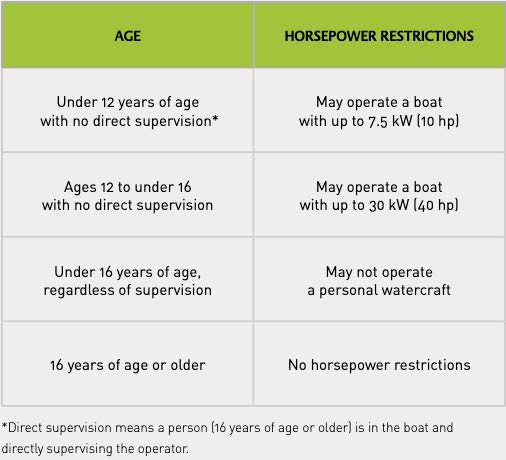
(from Safe Boating Guide – Transport Canada, 2019)
When heading out in your motorized boat, make sure to bring on board:  Proof of competency (PCOC Card)
Proof of competency (PCOC Card)
 Personal identification
Personal identification
 Pleasure craft licence (for vessels equipped with an engine 10hp or more)
Pleasure craft licence (for vessels equipped with an engine 10hp or more)
Youth must also carry proof of competency to operate any motorized boat, supervised or not.
Age and horsepower restrictions do not apply in the waters of the Northwest Territories and Nunavut.
Hull Identification Number (HIN)
Pleasure craft made in Canada or imported into Canada after 1981 must have a Hull Identification Number (HIN).
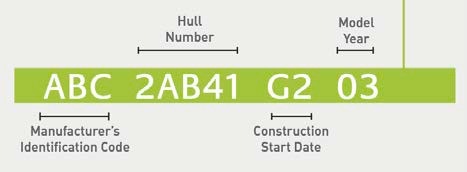
The HIN is important in the event of a manufacturer recall or a lost or stolen vessel.
Vessel licence or registration
A pleasure craft is a vessel that is used for pleasure, recreation, or daily living and doesn’t carry persons who have paid a fee.
Pleasure craft licence
Any pleasure craft that is equipped, even temporarily, with one or more engines whose total power is at least 10 horsepower (7.5 kW) or more in Canada, must have a Pleasure Craft Licence before it can be operated unless it is registered in the Canadian Register of Vessels.
A pleasure craft licence is a document with a unique number displayed on both sides of the bow of a pleasure craft. The pleasure craft licence is like a licence plate on your car. This number allows police and search and rescue personnel to access important information in an emergency.
You may be fined $250 if your pleasure craft does not have a valid licence or is not registered. The Pleasure Craft Licence is not proof of ownership, and is valid for 10 years. You can check the expiry date of your pleasure craft licence with your licence number.
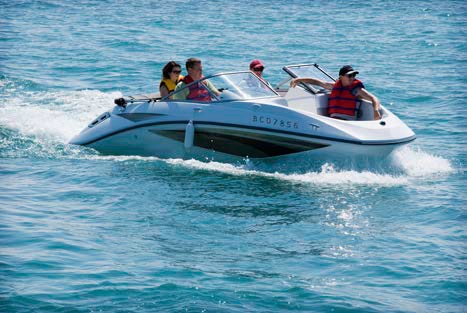
As mentioned earlier, the number found on the outside of the hull, is the vessel license number:
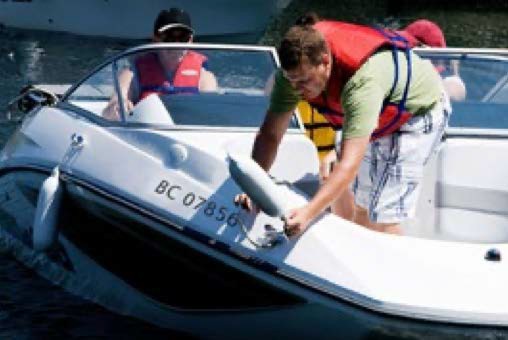
Vessel registration
Vessel registration is required if:
 the vessel is used for commercial purposes and it’s powered by motors totaling 7.5 kW (10 horsepower) or more
the vessel is used for commercial purposes and it’s powered by motors totaling 7.5 kW (10 horsepower) or more  it is used outside of Canada
it is used outside of Canada
 if registration is needed for a marine mortgage registered with Transport Canada
if registration is needed for a marine mortgage registered with Transport Canada  you require a reserved name.
you require a reserved name.
 Small Commercial vessels <15 tonnage – “C” licence
Small Commercial vessels <15 tonnage – “C” licence
When a vessel is registered it’s recorded in the Canadian Register of Vessels and it is assigned an official number.
If a vessel is equipped with a VHF radio, anyone operating this device is required to hold a valid operators certificate Restricted Operator’s Certificate Maritime (ROC(M)); you can register for the ROC(M) course here.
An operator must carry a copy of the Certificate on board the vessel. Any person who operates a radio in the Maritime Bands without the appropriate Certificate is liable for a fine under the Contraventions Act. See Appendix 2 — Contraventions Act.
Drugs and Alcohol
Statistics compiled by the Canadian Coast Guard show that more than 40 per cent of all recreational boating fatalities in Canada are alcohol related.

Transport Canada provides an overview of the consequences of boating while impaired.
This video, produced by the Ontario Provincial Police Marine Unit, provides valuable information relating to the use of alcohol, cannabis, and other drugs while boating in Ontario. Similar rules apply in most other provinces.
Boating 101: The OPP on the ABC’…
only this video is relevant for this course Section 253 of the Criminal Code of Canada makes it illegal:
 to operate a vessel, or to have the care or control of one (whether it is in motion or not) while impaired or with a blood alcohol content of more than 80 milligrams per 100 millilitres (0.08).
to operate a vessel, or to have the care or control of one (whether it is in motion or not) while impaired or with a blood alcohol content of more than 80 milligrams per 100 millilitres (0.08).
 to permit others to operate or control a vessel when under the influence of alcohol, narcotics, barbiturates, marijuana, painkillers or codeine.
to permit others to operate or control a vessel when under the influence of alcohol, narcotics, barbiturates, marijuana, painkillers or codeine.
Some provincial codes make it illegal:
 to have alcohol on board, unless that vessel is equipped with sleeping accommodation, a head and a galley.
to have alcohol on board, unless that vessel is equipped with sleeping accommodation, a head and a galley.  for anyone on board a recreational vessel to consume alcohol while the vessel is under way.
for anyone on board a recreational vessel to consume alcohol while the vessel is under way.
 Provinces and territories have their own rules on legal alcohol limits, when you can drink and how alcohol can be carried on board. It is recommended you contact your local law enforcement authorities for more information.
Provinces and territories have their own rules on legal alcohol limits, when you can drink and how alcohol can be carried on board. It is recommended you contact your local law enforcement authorities for more information.
Frequent checks are now being made by peace officers. Every week charges are laid and convictions obtained.
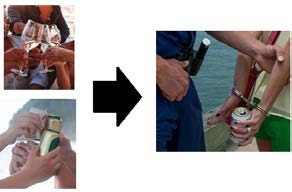
Both nationally and provincially the laws dealing with impaired operation of automobiles, boats and aircraft are becoming increasingly rigorous.
A conviction for impaired boating, could
 be considered for sentencing purposes in connection with a subsequent conviction for impaired driving
be considered for sentencing purposes in connection with a subsequent conviction for impaired driving  lead to a jail sentence
lead to a jail sentence
 lead to the loss of your automobile driver’s licence
lead to the loss of your automobile driver’s licence
Alcohol – The Cost of Drinking
courtesy of the Canada Safe Boating Council
The regulations change from time to time, so vessel owners must keep up to date regarding the changes.
 The rule “If you drink, don’t drive” applies equally to all watercraft.
The rule “If you drink, don’t drive” applies equally to all watercraft.
Mandatory Equipment
Pleasure craft include power boats, sail boats, and personal watercraft, as well as less common boats like airboats, air cushion vehicles (hovercraft), and wing in ground effect vessels that are used only for recreation.
The mandatory safety requirements do not apply to inflatable self-propelled water toys.
 These toys are not designed for use in open water.
These toys are not designed for use in open water.
 If you do choose to operate these toys in open water, enforcement officers will treat them as pleasure craft that are subject to the same strict rules as other pleasure craft.
If you do choose to operate these toys in open water, enforcement officers will treat them as pleasure craft that are subject to the same strict rules as other pleasure craft.
 Operating a remote-controlled vessel or a propeller-driven surfboard is against the law in Canada.
Operating a remote-controlled vessel or a propeller-driven surfboard is against the law in Canada.
All pleasure craft, whether human or mechanically powered, have a minimum mandatory requirement of safety equipment that must be onboard.
All equipment must be Canadian approved and in good working order.
The minimum safety equipment requirements list can be found in The Canada Safe Boating Guide.
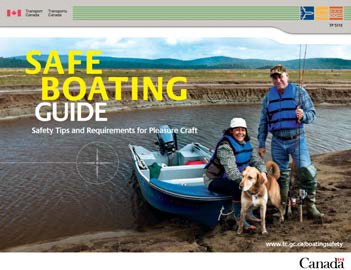
Published by Transport Canada, this guide is available as a free download and should be a part of every boater’s library – whether owner, operator, or crew.
 Of particular importance, is the section starting on Page 16 of the Safe Boating Guide, on minimum safety equipment requirements which lists requirements by boat type and length. Use this QR code to access the page directly:
Of particular importance, is the section starting on Page 16 of the Safe Boating Guide, on minimum safety equipment requirements which lists requirements by boat type and length. Use this QR code to access the page directly:

This safety equipment must be:  carried onboard
carried onboard
 in good working order
in good working order
 easily accessible (so that it can be used in an emergency)
easily accessible (so that it can be used in an emergency)
 maintained and replaced in accordance with the manufacturer’s instructions or recommendations.
maintained and replaced in accordance with the manufacturer’s instructions or recommendations.
All equipment must be Canadian-approved and clearly marked with the appropriate approval label.
You are encouraged to become familiar with these requirements and periodically check your vessel and equipment to ensure it is in good working order.
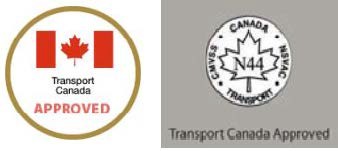
 A priority is the wearing of life jackets.
A priority is the wearing of life jackets.
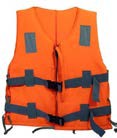 The Canadian Red Cross estimate that wearing a life jacket could eliminate up to 90 percent of all boating- related drownings.
The Canadian Red Cross estimate that wearing a life jacket could eliminate up to 90 percent of all boating- related drownings.
Safety Equipment Requirements
(taken from Safe Boating Guide -Transport Canada, 2019)
You must have the right equipment on board. If something goes wrong on the water, you will be much better prepared to deal with it if  you have the right equipment on board
you have the right equipment on board
 it is in good working order
it is in good working order
 everyone can find it and use it
everyone can find it and use it
 The best protection you can give yourself on the water is to always wear your lifejacket or your PFD. In Canada, the safety equipment required on board depends on the type and length of your boat.
The best protection you can give yourself on the water is to always wear your lifejacket or your PFD. In Canada, the safety equipment required on board depends on the type and length of your boat.
You can find the length of your boat by reading the manufacturer’s product information or by measuring it yourself. Categories for Minimum Safety Equipment Requirements
 This not a complete list
This not a complete list
 Personal Lifesaving Appliances (example, lifejackets
Personal Lifesaving Appliances (example, lifejackets
 Vessel Safety Equipment (example, bailer of bilge pump)
Vessel Safety Equipment (example, bailer of bilge pump)  Vessel Signals (example, flashlight, flares)
Vessel Signals (example, flashlight, flares)
 Navigation Equipment (example, sound signalling device (horn), navigation lights, compass)
Navigation Equipment (example, sound signalling device (horn), navigation lights, compass)
 Fire Fighting Equipment (example, fire extinguisher, axe, bucket)
Fire Fighting Equipment (example, fire extinguisher, axe, bucket)
 These equipment requirements apply only to pleasure craft and are the same whether you own, rent or borrow the boat.
These equipment requirements apply only to pleasure craft and are the same whether you own, rent or borrow the boat.
Fire Extinguishers
Every fire extinguisher carries
 one or more letters telling you the kind of fires it can be used on (see Fire Extinguisher Classification System)
one or more letters telling you the kind of fires it can be used on (see Fire Extinguisher Classification System)
 a number that indicates the size of the fire it can put out. The higher the number, the larger the fire it can handle.
a number that indicates the size of the fire it can put out. The higher the number, the larger the fire it can handle.
 To meet regulation requirements, your extinguisher must have all the letters and the same number or higher for the extinguisher set out in Table 5-2: Required Fire Fighting and Detection Equipment.
To meet regulation requirements, your extinguisher must have all the letters and the same number or higher for the extinguisher set out in Table 5-2: Required Fire Fighting and Detection Equipment.
Always remember that the requirements are the minimum.
Installing a 2:A 10:BC instead of a 1:A 10:BC will increase your ability to fight a Class A fire.
Marine Type Fire Extinguishers
The fire extinguisher you choose must bear a mark that shows it is certified by:
 Underwriters Laboratories of Canada (ULC)
Underwriters Laboratories of Canada (ULC)  Underwriters’ Laboratories Inc. (UL)
Underwriters’ Laboratories Inc. (UL)
 Unites States Coast Guard
Unites States Coast Guard
Marine type fire extinguishers are required.
 Do not keep extinguishers that use CO2 (carbon dioxide) or other gas harmful to humans in or near spaces normally occupied by passengers or crew.
Do not keep extinguishers that use CO2 (carbon dioxide) or other gas harmful to humans in or near spaces normally occupied by passengers or crew.
Do use extinguishers with CO2 (carbon dioxide) or other gas with similar fire smothering capability for enclosed engine spaces that will not have people in them.
 Some dry chemical extinguishers may be corrosive for metal such as aluminum.
Some dry chemical extinguishers may be corrosive for metal such as aluminum.
Consider all these factors before selecting the proper fire extinguisher.
Fire Extinguisher Classification System
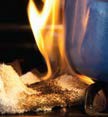 The class of fire extinguisher is based on the type of fire it puts out.
The class of fire extinguisher is based on the type of fire it puts out.
Class A FireA fire involving wood, cloth, paper, rubber and plastics.
 Class B FireA fire involving flammable liquids such as gas, oil, and grease.
Class B FireA fire involving flammable liquids such as gas, oil, and grease.
 Class C FireA fire involving live electrical wires or equipment.
Class C FireA fire involving live electrical wires or equipment.
Charts – Types and Requirements
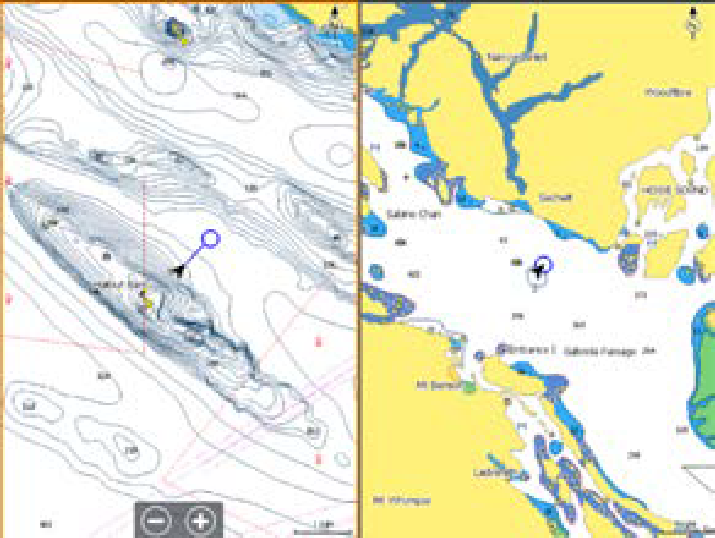 Canadian charts are published by the Canadian Hydrographic Service (CHS) and are available in paper and electronic formats. CHS charts are mandatory equipment for all Pleasure Craft with two exceptions. Charts are not needed:
Canadian charts are published by the Canadian Hydrographic Service (CHS) and are available in paper and electronic formats. CHS charts are mandatory equipment for all Pleasure Craft with two exceptions. Charts are not needed:
 If the vessel is equipped with a Electronic Chart Display and Information System, (ECDIS), and backup computers and power supply
If the vessel is equipped with a Electronic Chart Display and Information System, (ECDIS), and backup computers and power supply
 If the operator/owner of a vessel has adequate knowledge of the area in which the vessel is
If the operator/owner of a vessel has adequate knowledge of the area in which the vessel is
operating.
If the vessel is involved in a catastrophic or fatal accident, the operator could be determined to have operated in an unsafe manner or without the critical navigation information provided by charts.
 It is a legal requirement to carry the most recent versions of the charts, documents and publications, in respect of each area where the vessel is scheduled to be navigated, on board your vessel.
It is a legal requirement to carry the most recent versions of the charts, documents and publications, in respect of each area where the vessel is scheduled to be navigated, on board your vessel.
Chart plotter charts or App based charts are not a legal substitute for official government charts.
Marine charts are maps designed specifically for use in nautical navigation. On a relatively small piece of paper, they show  water depths
water depths
 tides and currents
tides and currents
 navigation aids such as buoys and light houses
navigation aids such as buoys and light houses  marine hazards
marine hazards
 where safe water can be found
where safe water can be found  overhead power lines
overhead power lines
 harbours, marinas
harbours, marinas
 other information necessary for safe boating
other information necessary for safe boating
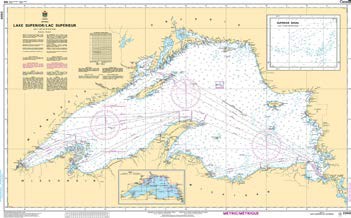
Using up-to-date paper charts facilitates planning a cruise as they provide the “big picture”. This big picture view is not fully achievable using the screen of a electronic navigation device.
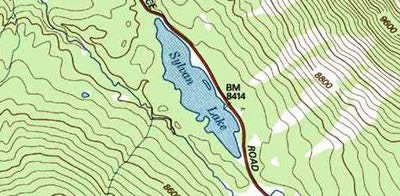 Paper charts are also essential in the event of a failure of electronic navigation devices. Where no nautical charts are available, topographic maps can be used.
Paper charts are also essential in the event of a failure of electronic navigation devices. Where no nautical charts are available, topographic maps can be used.
 Topographic maps do not show
Topographic maps do not show  marine aids to navigation
marine aids to navigation
 underwater hazards
underwater hazards  boating channels
boating channels
 anchorages
anchorages
A vessel operator should be always capable of identifying their position on a chart, in order to:
 know if they are heading into an area that would be dangerous to the vessel or crew;
know if they are heading into an area that would be dangerous to the vessel or crew;  coordinating travel plans with other vessels; and
coordinating travel plans with other vessels; and
 particularly in case of an emergency in order to summon help
particularly in case of an emergency in order to summon help
This course includes sections on navigation using paper charts, and electronic navigation so that you can always know your position and stay safe.
Preparations become more critical if you trip involves crossing larger bodies of water, for example Lake Simcoe or the Salish Sea.
The larger open waters allows the unchecked wind to create larger waves making vessel passage more difficult for a power vessel and potentially dangerous to a smaller sailboat or self-propelled vessel. In theses instances vessel seaworthiness, the capability of the crew and fuel supply requirements must be fully considered and all precautions taken before making the journey.
Also, weather forecasts should be consulted as longer journeys over larger bodies of water take more time during which weather conditions may change; a bright sunny day can become wet, stormy or foggy.
Seaworthiness of Vessel
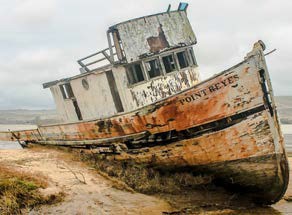
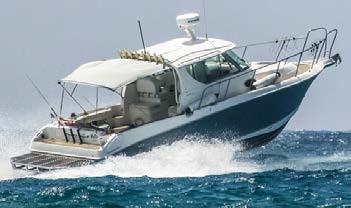 vs
vs
Seaworthiness of a vessel falls into two general categories:  The construction of a vessel
The construction of a vessel
 The maintenance of a vessel
The maintenance of a vessel
Construction of a Vessel
The construction standards for small pleasure craft are, for the vast majority of boaters, only a matter of concern at the time of purchase. All vessels in Canada must comply with the construction standards set out by Transport Canada.
When purchasing a pleasure craft look for a Compliance Notice.
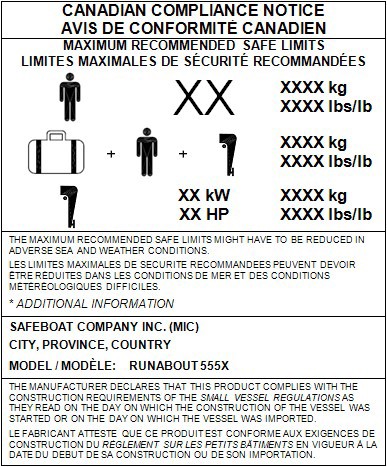
For more information and examples of compliance notices and requirements, check Transport Canada, Compliance notices for pleasure and non-pleasure craft.
For small pleasure craft (up to 6 meters /19.7 feet) the compliance notice will include information on recommended safety limits in good weather conditions. These include:
 motor size
motor size
 passenger load
passenger load
 weight the boat can hold
weight the boat can hold
 These limits are for good weather conditions only.
These limits are for good weather conditions only.
Maintenance of a Vessel
Seaworthiness extends to the upkeep and maintenance of a vessel.
A vessel that is seaworthy is able to survive weather and sea conditions for the intended use.
As discussed in the Laws & Regulations page, the Criminal Code of Canada states that it is an chargeable offence, including both fines and imprisonment, to endanger the life of anyone by operating an unseaworthy vessel.
Compliance with this law extends to the boat owner, operator (person controlling the pleasure craft on the water) and crew. The owner/operator should have the experience and skill for the trip that is planned.
The following is a list of these requirements for all Pleasure Craft:
 Properly functioning navigation equipment and up-to-date charts and publications.
Properly functioning navigation equipment and up-to-date charts and publications.  Vessel Licence or Registration Certificate.
Vessel Licence or Registration Certificate.
 Pleasure Craft Operators Certificate (PCOC Card) and ROC(M) Card (if boat is equipped with a radio).
Pleasure Craft Operators Certificate (PCOC Card) and ROC(M) Card (if boat is equipped with a radio).
In addition to the above equipment and certificates, the following systems checks should be carried out before departure;
 Gas fumes, fluid leaks, or water in bilge
Gas fumes, fluid leaks, or water in bilge  Fuel supply for intended trip
Fuel supply for intended trip
 Electrical system
Electrical system
 Safety equipment is onboard, safely stowed, and accessible.
Safety equipment is onboard, safely stowed, and accessible.
On Personal Water Craft (PWC) and some smaller pleasure craft, operators should check that the automatic stop switch lanyard is properly attached.
If the vessel is rented, the rental agency or marina should be contacted if there are problems. They may be a primary source of help for an emergency that is a technical problem.
 the owner/operator is legally responsible for the safety of the vessel and all those on board.
the owner/operator is legally responsible for the safety of the vessel and all those on board.
Radio Usage and Equipment Requirements
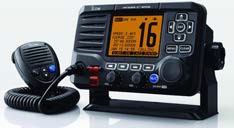 Pleasure craft are frequently outfitted with a marine band radio and/or have a handheld marine radio on board.
Pleasure craft are frequently outfitted with a marine band radio and/or have a handheld marine radio on board.
The primary purpose of a marine radio is to facilitate emergency communications between vessels or between a vessel and a shore-based facility. In Canada this would be a Canadian Coast Guard radio station.
If a vessel is equipped with a VHF radio, anyone operating this device is required to hold a valid operators certificate. CanBoat / NautiSavoir has been delegated by Transport Canada to offer this certification.
An operator must carry a copy of the Certificate on board the vessel. Any person who operates a radio in the Maritime Bands without the appropriate Certificate is liable for a fine under the Contraventions Act – See Appendix 2 — Contraventions Act.
Pleasure craft operators are encouraged to obtain the Restricted Operator Certificate (Maritime) (ROCM). While you can contact the Canadian Coast Guard Radio in the event of an emergency without the ROCM, having the certificate will provide you with the knowledge to do so quickly and efficiently.
Marine Band Radio Stations
A marine band radio station (device) can also be licensed. The licensing requirement also applies to handheld VHF radios.
A station licence is currently not required in Canada; however, if you are going boating in another country, check the rules for radio licences before you travel.
For example: A station licence is currently required by Canadian registered/licensed vessels visiting US waters and some other countries.
 A handheld marine VHF radio may not be used as a walkie-talkie ashore.
A handheld marine VHF radio may not be used as a walkie-talkie ashore.
Pre-Departure
Responsibilities begin before a vessel gets underway and continue until it returns safely to port and has been secured. This section outlines the pre-departure responsibilities and provides guidance in preparing your vessel for departure.
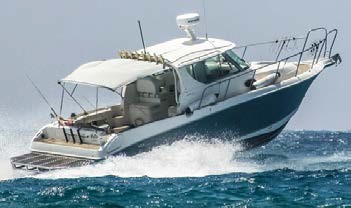
The pre-departure safety check includes mandatory safety equipment, legal documentation, the condition of the vessel and its electrical and propulsion systems, navigation equipment, fuel supply, and crew preparedness.
Using the Transport Canada Pre-Departure Checklist will ensure that all equipment and pre-checks are completed before departure. For new boaters, these checks will ensure compliance with the requirements and reinforce the importance of the vessel’s safe operation.
In most boating areas across Canada, enforcement surveillance is present, and fines are extensive.
Please remember that the mandatory equipment and vessel condition must be inspected frequently to ensure everything is in good working condition.
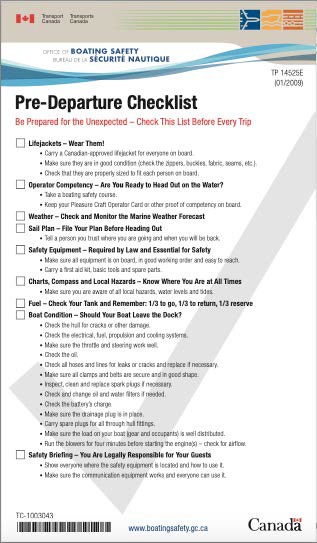
Click here to download a PDF copy of the Pre-Departure Checklist.
To avoid being stranded and having to call for help, an operator should ensure fuel tanks have the required amount of fuel for the trip planned before departure, and if you are running low while underway, head to the nearest refuelling facility.
Fuel Options
The fuel generally used in modern marine engines is either gasoline or diesel.
Diesel:
 low volatility
low volatility
 a high flash point
a high flash point
 greater fuel efficiency
greater fuel efficiency  is less hazardous
is less hazardous
 gives a longer cruising range for a given quantity of fuel
gives a longer cruising range for a given quantity of fuel
Gasoline
 evaporates readily
evaporates readily
 has a low flash point so will explode easily
has a low flash point so will explode easily
 its vapour is heavier than air, so sinks into the bilges
its vapour is heavier than air, so sinks into the bilges
A mixture of gasoline vapour and air can be a powerful explosive.
To avoid a very hazardous condition, appropriate precautions must be taken. These include:  a periodic sniff test
a periodic sniff test
 keep gasoline in approved tanks
keep gasoline in approved tanks
 never carry gasoline in open pans or glass containers
never carry gasoline in open pans or glass containers
 always fill portable fuel tanks ashore and not on the boat
always fill portable fuel tanks ashore and not on the boat
 Run the Bilge Blower for a Minimum of 4 Minutes Before Starting the Engine
Run the Bilge Blower for a Minimum of 4 Minutes Before Starting the Engine
Fairwinds Marina at Nanoose Bay on Vancouver Island provided these images to show what can happen when the bilge blower is not run. In this instance the boat did not sink and there were only minor injuries.
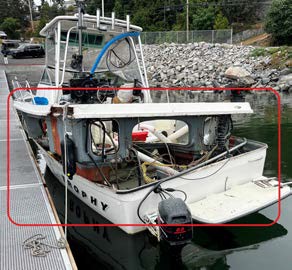
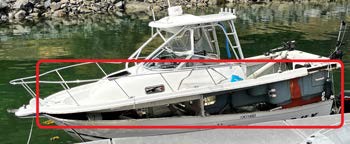
Fuel Supply
Running out of fuel is the single most frequent emergency that boaters experience.
Before you leave
 check the fuel supply to ensure that there is enough for the journey
check the fuel supply to ensure that there is enough for the journey  note locations where you may get fuel en-route
note locations where you may get fuel en-route
Determine your fuel consumption per hour and record you engine hours to keep track of fuel consumption.
Larger boats and larger engines use more fuel and diesel engines use less than gas engines, but all boats consume more fuel when traveling against a headwind and adverse current.
Consider the outbound and return legs of the trip combined. A good rule of thumb is to estimate your consumption (liters/hour) for your planned trip and add 50 percent more fuel the boat.
Take note of the maxim of “one-third out, one-third back, and one-third in reserve”.
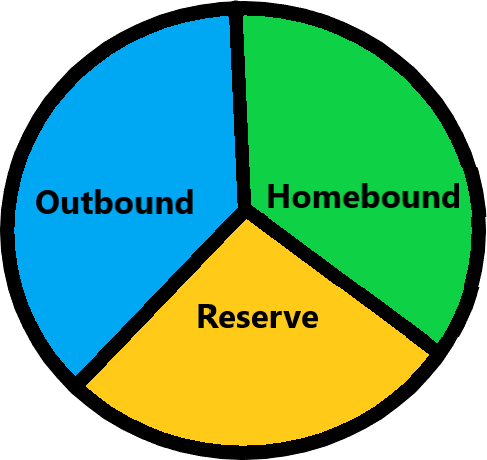
This rule will provide a safety margin which could become critical in the event of poor weather, strong tides or other emergencies.
Personal Watercraft Fuel
Personal watercraft are equipped with a special type of fuel shut-off valve which warns the operator when fuel levels are depleted. A “reserve” setting enables the remaining fuel to be used. To avoid being stranded, head straight to the nearest refueling facility.
Provincial authorities establish vessel refuelling procedures; these procedures vary from province to province. The following steps are general guidelines to help you and your crew comply with local procedures, if any exist.
Following the correct procedures will reduce or eliminate risks associated with fueling. Explosions and fires during and after refuelling can have devastating consequences.
Boat Explodes At Gas Dock In Inv…
Whether self-refueling or refueling by a dock attendant, it is necessary to ensure that fuel is added to the fuel tank, not the water or holding tank. Occasionally, this does occur, and the resultant contamination is time-consuming and costly to correct.
If self-refuelling is permitted, the steps are:
Before Refueling
 Tie up the boat securely.
Tie up the boat securely.  Switch off the engines.
Switch off the engines.
 Have all persons not involved in fuelling go ashore.
Have all persons not involved in fuelling go ashore.
 Remove portable tanks off the boat and refill them ashore.
Remove portable tanks off the boat and refill them ashore.
 Extinguish all open flames, especially if there is a propane refrigerator on board.
Extinguish all open flames, especially if there is a propane refrigerator on board.  Switch off all electrical equipment.
Switch off all electrical equipment.
 Ensure that no one is smoking in proximity to the boat on the dock.
Ensure that no one is smoking in proximity to the boat on the dock.  Close all ports, hatches and doors.
Close all ports, hatches and doors.
While Refueling is in Progress
 Hold the nozzle against the fill-pipe to avoid static spark.
Hold the nozzle against the fill-pipe to avoid static spark.
 Take care not to let the fuel flow faster than the fill-pipe can handle in order to avoid “kickback” or “burping” from the fill-pipe and the fuel vent fitting.
Take care not to let the fuel flow faster than the fill-pipe can handle in order to avoid “kickback” or “burping” from the fill-pipe and the fuel vent fitting.
 Have absorbent pads or materials ready to use for wiping up spills.
Have absorbent pads or materials ready to use for wiping up spills.
 Do not use soap or detergent to disperse fuel spills on the water. They spread the fuel, they do not absorb it and their use is against the law.
Do not use soap or detergent to disperse fuel spills on the water. They spread the fuel, they do not absorb it and their use is against the law.
After Refueling
 Open all ports, hatches and doors to ventilate all interior cabins.
Open all ports, hatches and doors to ventilate all interior cabins.
 Turn on the blower for at least four minutes to clear fuel vapours from the bilge area.
Turn on the blower for at least four minutes to clear fuel vapours from the bilge area.
Check your vessel’s vapour monitor system, if one is installed, to ensure no lingering fumes and test for fuel vapour.
 It is recommended that vessels with enclosed engine compartments or below deck spaces should have sensors installed to detect and warn of harmful fumes
It is recommended that vessels with enclosed engine compartments or below deck spaces should have sensors installed to detect and warn of harmful fumes
Use your nose to do a periodic sniff test to detect harmful vapours in open boats.
Start the engine.
Allow passengers to reboard. Cast off.
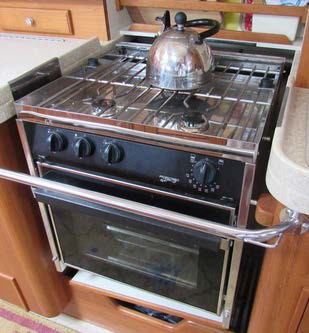 No fuel is totally safe on a boat. Gas, propane, and butane:
No fuel is totally safe on a boat. Gas, propane, and butane:  are heavier than air
are heavier than air
 will accumulate in the lower parts of a boat
will accumulate in the lower parts of a boat  are highly explosive
are highly explosive
 are difficult to clear
are difficult to clear
Safety Basics for All Appliances
Each appliance you use on your boat will have different safety requirements. Make sure you are familiar with the appliances on any boat you use.
Taking some basic safety precautions can prevent explosions and fires.
 Combustion stoves and heaters must be installed to allow full circulation of air around them when in use.
Combustion stoves and heaters must be installed to allow full circulation of air around them when in use.
Portable appliances and heaters must be secured so that unexpected movement does not cause a leak.
Propane tanks and auxiliary fuel containers must be stored in a vented compartment where they can be fully ventilated.
When not in use, always turn off the propane and gas stoves at the tank valve.
Do not leave open flames unattended.
Run your bilge blower when using fuel-burning appliances.
Shield woodwork, curtains and other flammable material from hot pipes and other sources of heat.
Regularly test all joints and valves for leakage by using soapy water. If bubbles form, there is a leak.
It is important to check the fuel fittings and ventilation on your boat before you turn on your engine. Not doing so could result in this:
Boatie hospitalised after fuel expl…
If fuel tanks are permanently fitted, they must
 be filled through a deck plate that drains overboard
be filled through a deck plate that drains overboard  have a breather pipe that vents overboard
have a breather pipe that vents overboard
 have a supply line to the engine that emerges from the top of the tank with its inner portion extending almost to the bottom
have a supply line to the engine that emerges from the top of the tank with its inner portion extending almost to the bottom
The whole fuelling unit from deck plate to engine should be electrically bonded to ground out any static charge.
Modern boats with enclosed engine compartments are ventilated using open air vents and power-driven exhaust fans according to regulations.
 It is still important to check for fuel vapour in the boat’s bilges to prevent an explosion.
It is still important to check for fuel vapour in the boat’s bilges to prevent an explosion.
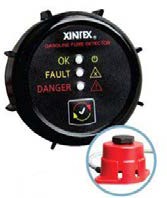 An electronic “bilge sniffer” that samples the air in the bilge and indicates the presence of danger is recommended. The example to the right checks for gasoline fumes:
An electronic “bilge sniffer” that samples the air in the bilge and indicates the presence of danger is recommended. The example to the right checks for gasoline fumes:
Most boats are equipped with a detector but if your boat doesn’t have one, you may want to consider installing one.
And don’t forget, the human nose is an excellent detector – use it.
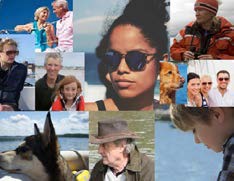 Attention must be paid to the comfort of all aboard, and the following are important points to keep in mind.
Attention must be paid to the comfort of all aboard, and the following are important points to keep in mind.
Items for the comfort of crew and passengers should be checked; items such as cold drinks (non-alcoholic), food, sunscreen, blankets, etc.
The security of the vessel and safety of the crew and guests is the responsibility of the owner/operator of the vessel.
Food and Fresh Water

Suitable Clothing
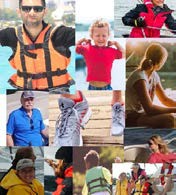
No matter how short the trip is intended to be, a supply of food and fresh water should always be carried on board for everyone including four-footed passengers.
Make sure there is enough to allow for weather delays.
Appropriate clothing and footwear adds greatly to the pleasure of boating and, in severe weather, adds to crew safety.
 Always wear and ensure that everyone is wearing lace-up shoes with non-skid soles.
Always wear and ensure that everyone is wearing lace-up shoes with non-skid soles.  Going barefoot can lead to stubbed toes and, on a wet deck, slips and falls.
Going barefoot can lead to stubbed toes and, on a wet deck, slips and falls.
 Long pants and a long-sleeved shirt or blouse should be worn, together with a suitable hat as
Long pants and a long-sleeved shirt or blouse should be worn, together with a suitable hat as
protection from sun. Warmer clothes may be needed for when temperatures drop.
 Sunglasses or a peaked cap will reduce glare.
Sunglasses or a peaked cap will reduce glare.
 Cold-weather gear should be aboard and stored in plastic bags to keep it dry for when weather changes or temperatures drop.
Cold-weather gear should be aboard and stored in plastic bags to keep it dry for when weather changes or temperatures drop.
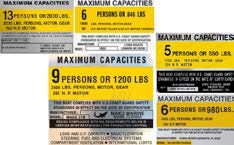 Boat Capacity
Boat Capacity
How many people and how much equipment, etc. is limited by the capacity plate affixed to the vessel and must be considered when loading the vessel.
 The boat must not be overloaded. Overloading is dangerous.
The boat must not be overloaded. Overloading is dangerous.
BetterBoater.ca | Game Show Que…

Freeboard
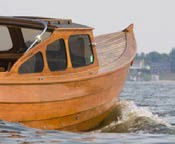
Freeboard is the distance between the waterline and a boat’s working deck.
As a boat’s load is increased, the boat settles lower in the water and its freeboard is reduced.
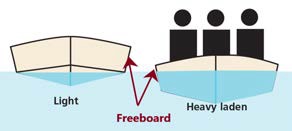
Ensure the boat is not overloaded and has sufficient freeboard to keeping water out, avoid swamping, and to maintain stability.
Trim and List
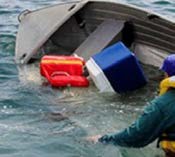 Trim is how a boat runs in the water. Too much weight in the bow or stern will trim a boat bow-heavy or stern-heavy.
Trim is how a boat runs in the water. Too much weight in the bow or stern will trim a boat bow-heavy or stern-heavy.

This video explains trim in detail:
BetterBoater.ca | Trim
List occurs when weight distribution is unbalanced in a boat.
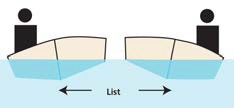
In each case
 the boat is more difficult to handle
the boat is more difficult to handle  freeboard is reduced
freeboard is reduced
 the danger of swamping is increased
the danger of swamping is increased  more fuel is used
more fuel is used
🚨 SINKING BOAT! 🚨 at Haulove…
To ensure good trim and prevent list, passengers and gear should be distributed so that the boat rides level, both fore-and-aft, and side-to-side.
Effects of Being on the Water
 The boat’s motion, sunlight, waves, wind and sound can reduce a person’s ability to operate a craft. They can negatively affect
The boat’s motion, sunlight, waves, wind and sound can reduce a person’s ability to operate a craft. They can negatively affect
 balance
balance
 coordination
coordination  reflexes
reflexes
 judgment
judgment
 response time
response time  eyesight
eyesight
 hearing
hearing
Long cruising hours may also lead to fatigue and decrease the ability to operate a boat safely.
The consumption of alcohol, drugs or controlled substances can make things worse. Alcohol and drugs are known to
slow hand-eye coordination impact balance
cloud judgment
have an adverse effect on a boater’s competence
1.2.7 Preparing and Filing a Trip Plan
If the planned cruise is expected to last overnight or cover a long distance, it is important to file a trip plan, also called a sail plan, with some responsible contact person.
The plan should include the details required to initiate a call for search and rescue, if that should become necessary. The contact person should also be familiar with these emergency procedures.
During the trip, it is imperative to keep the plan updated and the contact fully informed, so as to avoid unnecessary activation of search and rescue assets.
The trip plan should include:
 name and number of the pleasure craft.
name and number of the pleasure craft.
 whether the craft is a sailboat or a powerboat.
whether the craft is a sailboat or a powerboat.
 name, address and telephone number of the owner.
name, address and telephone number of the owner.  number of persons on board.
number of persons on board.
 size, type and colour of the craft.
size, type and colour of the craft.  type of engine.
type of engine.
 distinguishing features of the craft.
distinguishing features of the craft.
 type of marine radio, if any, and channel monitored.
type of marine radio, if any, and channel monitored.
 safety equipment carried, including flares, lifejackets and life rafts.
safety equipment carried, including flares, lifejackets and life rafts.
 a description of the trip, the planned time of departure, the planned time of return and proposed route.
a description of the trip, the planned time of departure, the planned time of return and proposed route.  instructions in case of emergency.
instructions in case of emergency.
 cell phone number, if a cellphone is on board.
cell phone number, if a cellphone is on board.
Here is one example of a trip plan (from the Canada Safe Boating Guide) and you will find more in the Supporting Resources for this section. It is similar to the trip plan forms available from Transport Canad.
Example of Trip Plan
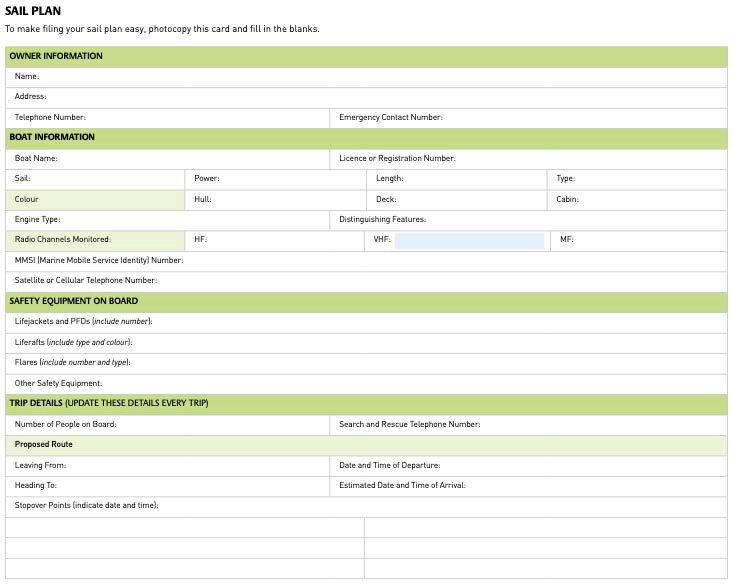
Underway
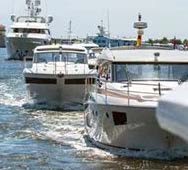 Boat operators have a responsibility to act in accordance with many rules and regulations when on the waterways.
Boat operators have a responsibility to act in accordance with many rules and regulations when on the waterways.
Similar to driving an automobile on a public highway, rules are designed to keep you, your crew and guests as well as other boaters safe and the marine and shoreline environment protected.
While on the water, it is an offence, under the Criminal Code of Canada, to:
 operate a vessel in a dangerous manner.
operate a vessel in a dangerous manner.
 consume alcohol/drugs while operating a vessel.
consume alcohol/drugs while operating a vessel.
 operate a vessel while impaired (blood alcohol at or above 0.08 mg).
operate a vessel while impaired (blood alcohol at or above 0.08 mg).
 tow water skiers without a competent person on watch or from one hour after sunset to sunrise.
tow water skiers without a competent person on watch or from one hour after sunset to sunrise.  fail to stop at the scene of a collision.
fail to stop at the scene of a collision.
 fail to comply with a command to stop by an enforcement officer.
fail to comply with a command to stop by an enforcement officer.  send a false distress signal.
send a false distress signal.
 operate an unseaworthy vessel.
operate an unseaworthy vessel.
 tie up to an aid to navigation buoy.
tie up to an aid to navigation buoy.
 Some of these offences can result in convictions and fines to both the operator of the boat and the owner. Also, operating a vessel while disqualified/prohibited is also a serious offence.
Some of these offences can result in convictions and fines to both the operator of the boat and the owner. Also, operating a vessel while disqualified/prohibited is also a serious offence.
Navigation and Safe Operations while Underway
The operator and/or navigator is responsible for knowing the boat’s approximate position at all times.
This is accomplished by both visual observations and electronic navigation devices or a combination of both.
In conditions of good visibility, locating water and land based aids to navigation and using paper charts are often sufficient, however, when the visibility is reduced in fog, rain or darkness, it may be necessary to rely on electronic navigation equipment to monitor the boat’s position and progress against the navigation plan or find a safe port or harbour.
This course presents several sections focused on knowing, understanding and using both manual and electronic navigation techniques.
There is a section reviewing the aids to navigation first introduced in the Pleasure Craft Operators Card (PCOC) course. The course reviews the official buoys and other navigation aids, such as the starboard lateral buoy shown below.
These aids are placed and maintained by the Canadian Coast Guard, which can also be used to fix the boat’s position. Aids to Navigation are maintained for the benefit of all boaters and are covered in more detail later in this course.

Starboard lateral buoy
Because of the critical importance of these aids to the navigation system it is a criminal offence to tamper or interfere with a buoy or any other aid to navigation.
This includes:
 mooring to it for any purpose.*
mooring to it for any purpose.*
 defacing it or altering its appearance or colour.**
defacing it or altering its appearance or colour.**  removing it.**
removing it.**
 concealing it by placing a craft so that it cannot be seen.**
concealing it by placing a craft so that it cannot be seen.**

*Anyone who makes fast a vessel or boat to a signal, buoy or other seamark that is used for purposes of navigation is guilty of an of fence punishable on summary conviction. The penalty is a fine of not more than $2,000.00 or six months’ imprisonment or both.
**Anyone who willfully alters, removes or conceals a signal, buoy or other seamark that is used for purposes of navigation is guilty of a chargeable of fence and liable for imprisonment for a term not exceeding ten years.
Aiding Other Vessels
When underway is the requirement to assist other boaters in distress. Marine safety laws require boaters to respond to on-the-water emergencies.
An exception to this requirement is:
 “If it will not cause serious danger to their own craft or guests, a boater is obliged to render assistance to any other mariner or vessel in distress.”
“If it will not cause serious danger to their own craft or guests, a boater is obliged to render assistance to any other mariner or vessel in distress.”
Maintain a Lookout
It is the responsibility of an operator and crew to maintain a lookout at all times when underway. The safety of the vessel and crew rely on keeping a close lookout.
Since circumstances change very quickly, particularly on a fast-moving boat, a good lookout focused on the boat systems and navigation devices, as well as the area adjacent to the vessel is essential.
An operator/crew must:
 monitor the engine gauges
monitor the engine gauges
 keep an eye on the depth finder
keep an eye on the depth finder
 avoid an accidental jibe on a sailboat
avoid an accidental jibe on a sailboat
 watch that nothing and no one goes over the side
watch that nothing and no one goes over the side  remain watchful of all nearby vessels
remain watchful of all nearby vessels
 be on the alert for signals that indicate distress and a need for assistance
be on the alert for signals that indicate distress and a need for assistance
 watch for storms which can sneak up on the unwary sailor
watch for storms which can sneak up on the unwary sailor
 be watchful for marine mammals, floating debris, logs, nets, and flotsam and jetsam of all kinds and shapes
be watchful for marine mammals, floating debris, logs, nets, and flotsam and jetsam of all kinds and shapes  look in all directions, including overhead and behind:
look in all directions, including overhead and behind:
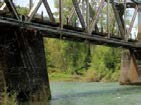
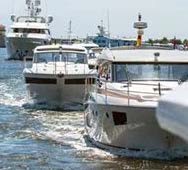
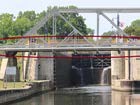
This course is focused on presenting operators of pleasure craft with the knowledge and understanding of legal responsibilities as well as ways and means to be safe when underway.
Operating Rules of the Waterways
Collision Regulations are “rules of the waterways” to prevent vessel collisions. These rules apply to all waterways in Canada.
More appropriately called “collision avoidance rules,” they provide rules and guidance on:  passing
passing
 meeting head-on
meeting head-on  crossing
crossing
 other related encounters between vessels.
other related encounters between vessels.
Rules vary by vessel type (example, Sailing vessel vs. Power-driven vessel), visibility conditions and operational circumstances and apply to all pleasure craft operators.
Section 2 of this course is dedicated to a review of the Collision Regulations most relevant to pleasure craft operations. These rules are designed to prevent collisions, so all operators must understand and carefully follow them when on the water.
Regulatory and enforcement officials throughout Canada have identified the lack of understanding and adherence to the rules and regulations as a significant factor in boating incidents and accidents.
Operators are encouraged to focus on understanding and following the rules when on the waterways. It is also essential to review the rules before every boating season.
Like highway traffic rules, collision regulations are designed to keep boaters safe on the water.
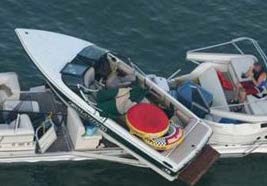
Hazards
In addition to knowing your position on the water, situational awareness extends to constant visual observation.
Floating Items
 Items floating in our waters such as metal drums, tree trunks, picnic tables, even large shipping containers which are level with the surface, and other similar large items can seriously damage the hull of a vessel that hits them at speed. In coastal waters and in
Items floating in our waters such as metal drums, tree trunks, picnic tables, even large shipping containers which are level with the surface, and other similar large items can seriously damage the hull of a vessel that hits them at speed. In coastal waters and in
some rivers and lakes, there are deadheads, which are large waterlogged logs floating vertically with their tops barely above the surface of the water.
Other hard to see small items such as plastic bags, polypropylene line and other floating objects can cause a great deal of damage and inconvenience by getting caught up in water intakes or becoming wrapped around propellers. A plastic bag jamming a water intake can ruin an engine in a few minutes by causing it to overheat.
Underwater Hazards
It is important to know your position on the water because charts and chartplotters can then assist in avoiding these hazards when navigating and when anchoring:
 Rocks and shoals
Rocks and shoals
 Underwater cables
Underwater cables
Overhead Hazards
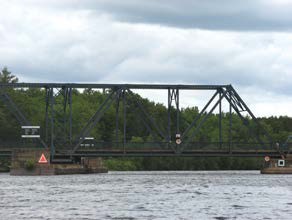 The overhead clearance beneath cables and bridges is usually shown on charts, but it may be less than indicated on the chart.
The overhead clearance beneath cables and bridges is usually shown on charts, but it may be less than indicated on the chart.
 Clearances in non-tidal waters are measured from chart datum, the depth shown on the chart of chartplotter.
Clearances in non-tidal waters are measured from chart datum, the depth shown on the chart of chartplotter.
 Clearances in tidal waters are measured from Higher High Water, Large Tides.
Clearances in tidal waters are measured from Higher High Water, Large Tides.
These clearances may be less than indicated.
 Wires may sag in hot weather due to expansion or during an ice storm if there is a buildup of ice.
Wires may sag in hot weather due to expansion or during an ice storm if there is a buildup of ice.  Water levels may be higher than normal because of high winds, seiches or spring floods.
Water levels may be higher than normal because of high winds, seiches or spring floods.
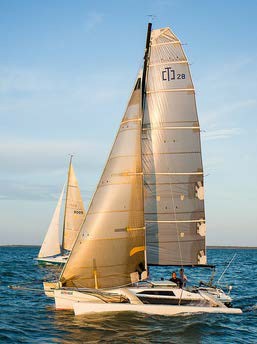
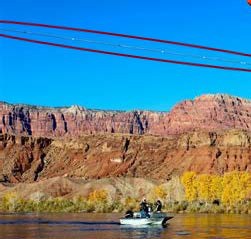 Sailboats with tall metal masts are particularly vulnerable to overhead hazards. Sailors should always be alert when sailing into unknown channels between islands.
Sailboats with tall metal masts are particularly vulnerable to overhead hazards. Sailors should always be alert when sailing into unknown channels between islands.
Electric power lines are hard to see if they blend with the background (circled in red in the image to the right); and if there is inadequate clearance, the current may arc across open air during periods of very high humidity.
If a vessel drifts into contact with an overhead wire, stay clear of metallic parts until contact is broken again or the overhead wire is de-energized.
 Do not jump overboard. Even when de-energized overhead lines may contain sufficient static electricity to cause significant harm. The electrical resistance of the body is lower than that of water, especially fresh water. A person can be electrocuted while
Do not jump overboard. Even when de-energized overhead lines may contain sufficient static electricity to cause significant harm. The electrical resistance of the body is lower than that of water, especially fresh water. A person can be electrocuted while
immersed in water.
Effects of Wake
A wake is the disturbed column of water around and behind a moving vessel, which is set into motion by its passage.
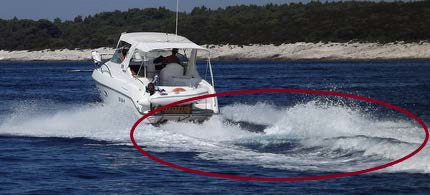
In many areas of our inland waterways there are speed limits; but even where there are not, it is discourteous to produce a wake that causes other vessels to rock excessively. Skippers are responsible for any injury or damage that their wake may cause.
The Collision Regulations (Rule 6) require boaters to maintain a low enough speed so that their wake will not adversely affect:
 other vessels such as dredges, tows, rowboats, canoes, wrecks, including those which are grounded or at anchor.
other vessels such as dredges, tows, rowboats, canoes, wrecks, including those which are grounded or at anchor.  work areas such as anchorages, docks, floats, shoreline and diving areas.
work areas such as anchorages, docks, floats, shoreline and diving areas.
 waterways which contain swimmers and other boaters.
waterways which contain swimmers and other boaters.
 bathing beaches and shoreline habitat.
bathing beaches and shoreline habitat.
The wake and propeller wash may not reach the shore until well after the boat has passed, and it is only by looking back a long way that its effect is noticed. Warning the skipper of the effect of the wake and propeller wash is a particularly useful role that a guest can fulfil.
Safety and Security of Your Vessel
The following section is a summary of the International Marine Organization (IMO) security guidelines relating to pleasure craft.
 These guidelines become very important when boating outside of Canadian waters.
These guidelines become very important when boating outside of Canadian waters.
Remember that the overall safety and security of your vessel, crew and passengers is your responsibility.
 Transport Canada’s Small Pleasure Craft Security Awareness page offers some of the same guidelines as the IMO, but in a more friendly fashion.
Transport Canada’s Small Pleasure Craft Security Awareness page offers some of the same guidelines as the IMO, but in a more friendly fashion.
 Travel and Tourism Canada provides some additional information to improve water safety when abroad.
Travel and Tourism Canada provides some additional information to improve water safety when abroad.
Where possible, lock external doors, hatches and storage areas and secure windows when you leave your pleasure craft unattended. If it will be left unattended for some time:
 moor the vessel according to local port by-laws.
moor the vessel according to local port by-laws.
 lock ignition switches to prevent theft/unauthorized use.
lock ignition switches to prevent theft/unauthorized use.  always take the ignition key with you.
always take the ignition key with you.
 consider installing a small craft alarm system to alert you to any unauthorized movement. Integrating the alarm system with
consider installing a small craft alarm system to alert you to any unauthorized movement. Integrating the alarm system with
smoke and fire sensors will give you a solid vessel protection system.  consider using steering locks, if practical.
consider using steering locks, if practical.
 consider etching the hull identification number onto windows and hatches.
consider etching the hull identification number onto windows and hatches.
 consider installing a hidden device to shut off the fuel line, or an engine immobilizer.
consider installing a hidden device to shut off the fuel line, or an engine immobilizer.
 Search your pleasure craft when you return to your vessel to make sure that nothing suspicious has been placed on board, left behind, or removed while the vessel was left unattended. If you find something suspicious, contact the appropriate local authorities right away.
Search your pleasure craft when you return to your vessel to make sure that nothing suspicious has been placed on board, left behind, or removed while the vessel was left unattended. If you find something suspicious, contact the appropriate local authorities right away.
 DO NOT handle suspicious packages or objects.
DO NOT handle suspicious packages or objects.
Have a plan for reporting and recording security incidents. The plan should include contacting the nearest police and/or coastal authorities and nearby vessels. To learn more, see Transport Canada Marine Safety and Security.
Managing Emergencies While Underway
Planning and preparation are the best ways to avoid emergencies when on the water, but emergencies do happen, often with severe consequences.
This section will equip the operator and crew to better manage emergencies.
 It’s important to remember that managing emergencies is an all-crew activity.
It’s important to remember that managing emergencies is an all-crew activity.
 Each crew member should be prepared to assist, and crew training is essential.
Each crew member should be prepared to assist, and crew training is essential.
This section will focus on
 managing common emergencies
managing common emergencies  medical emergencies
medical emergencies
 fire
fire
 grounding
grounding
 weather events It also touches on
weather events It also touches on
 assisting other vessels in distress
assisting other vessels in distress  safe towing practices
safe towing practices
 emergency communications with first responders
emergency communications with first responders
1.4.2 Medical Emergencies
Medical skills, first aid kits and emergency communication to obtain shore based medical assessments or advice, all have a major impact on the outcome of a medical emergency at sea.
Managing medical emergencies while on the water is an essential part of the training for all boaters. The CanBoat/Nauti/Savior Near Shore Marine Navigation course is an excellent source of information on managing Medical and other emergencies when on the water.
The Near Shore Marine Navigation course and First Aid Training from a recognized provider should be considered as essential future study.
Essential Training:
To be prepared for unforeseen medical situations, it is strongly advised that you take one of these courses and ensure that you keep the certification current:
 Canadian Red Cross Marine First Aid/CPR course
Canadian Red Cross Marine First Aid/CPR course
 St. John Ambulance Marine First Aid/CPR Course – two levels are offered plus a more advanced wilderness course Canadian Red Cross also offers a helpful cell phone First Aid app.
St. John Ambulance Marine First Aid/CPR Course – two levels are offered plus a more advanced wilderness course Canadian Red Cross also offers a helpful cell phone First Aid app.
The following are a overview of the principles and possible actions to manage emergencies such as:
 Hypothermia
Hypothermia
 Sunstroke (Heat Stroke)
Sunstroke (Heat Stroke)  Seasickness
Seasickness
 Carbon Monoxide Poisoning
Carbon Monoxide Poisoning  Crew Fatigue
Crew Fatigue
 Other Breathing Difficulties
Other Breathing Difficulties  Wounds
Wounds
Emergencies can arise quickly
The greatest concern is not having a plan to deal with most potential emergencies. Being prepared for unanticipated situations wards off the risk of strong>PANIC:
 the greatest crippling factor for crew facing these situations
the greatest crippling factor for crew facing these situations  it impairs appropriate management
it impairs appropriate management
Where prevention can be enacted, that is the preferable route, and constitutes the first line of defense. Preparedness for potential situations, stands as the second line of defense.
 It should be the mandate of a operator and crew to practice emergency procedures when these situations are not present.
It should be the mandate of a operator and crew to practice emergency procedures when these situations are not present.  Each crew member, if possible, should be given a designated task, that should be practiced before the real situation arises.
Each crew member, if possible, should be given a designated task, that should be practiced before the real situation arises.  The crew must be prepared to be self-reliant in anticipation of not having medical backup immediately available.
The crew must be prepared to be self-reliant in anticipation of not having medical backup immediately available.
Principles of First Aid
The three key principles are:
Preserve Life
This involves assessing the scene where the casualty is, to be sure that
 the casualty is not in mortal danger.
the casualty is not in mortal danger.
 the situation does not pose danger to the rescuers.
the situation does not pose danger to the rescuers.
At this stage, a quick assessment to check for dangers to the casualty, rescuers or bystanders, should be effected
Prevent Deterioration
To prevent further deterioration of the casualty’s condition that unnecessary movement may cause, it may be necessary to clear potential dangers from the scene such as unnecessary movement of a casualty.
This will also help prevent injury to the rescuers or bystanders.
Promote Recovery
Take the least time possible between the occurrence of the accident or incident and getting appropriate professional medical attention, if needed.
Take measures to minimize effects of the accident or incident.
Example: treat the casualty for shock by keeping them warm
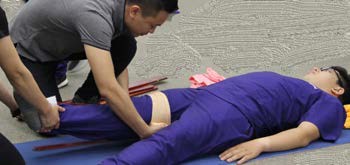
Responding to Medical Emergencies
The four basic actions to respond to a medical emergency include:
Taking Immediate Action
Respond as quickly as possible once it is safe to do so after the accident or incident. The measures taken should be appropriate to the level of expertise by the rescuer(s).
Calming Down the Situation
Rescuers should remain calm so that stress levels are kept low for the casualty, themselves, and bystanders. Staying calm aids in good decision making.
The best way to stay calm in an emergency is through training and practice.
Application of Relevant Treatment
Based on the situation and condition of the casualty, appropriate First Aid Measures need to be applied as soon as possible. The list of priority of assessment would be as follows:
- Assessment of level of Consciousness
- Assessment of the Airway and, if required, Opening the Airway, if possible
- Assessment of Breathing, then Circulation. Consider instituting CPR if breathing or circulation is impaired or absent, with use of an Automated Electronic Defibrillator (AED) if such is available.
- Assessment of other issues including Bleeding, and Injuries, as well as indicators of underlying medical conditions
(example: Medical Alert Bracelets, Medications on person, etc.)
- Continuous monitoring of the casualty’s condition and Documentation of observed findings and measures taken.
Calling for Medical Assistance
When the situation dictates, contact appropriate medical bodies through Joint Rescue Coordination Centre (JRCC) or Coast Guard.
Getting Assistance
Emergency assistance to vessel operator is available through the marine radio (VHF radio) and by telephone to shore based facilities.
 1.4.7 in this book provides information about calling for help on your marine radio.
1.4.7 in this book provides information about calling for help on your marine radio.
Marine Radio Communication
It is important for rescuers to know the limits of their ability and knowledge level, and not to institute measures beyond those limits, unless advised by a medical expert.
The optimal method to access medical advice is to call the Joint Rescue Coordination Centre (JRCC) using a cell or satellite phone.
 Your emergency contact list on board should include the number for JRCC/MRSC in your area.
Your emergency contact list on board should include the number for JRCC/MRSC in your area.
 If phone coverage is unavailable, any Marine Communications and Traffic Services Centre (MCTS) (otherwise known as Coast Guard Radio) can provide a phone patch via VHF radio to the appropriate JRCC or Marine Rescue Sub Centre (MRSC).
If phone coverage is unavailable, any Marine Communications and Traffic Services Centre (MCTS) (otherwise known as Coast Guard Radio) can provide a phone patch via VHF radio to the appropriate JRCC or Marine Rescue Sub Centre (MRSC).
By contacting JRCC for medical advice, an assessment will also be done as to level of care that might necessitate the tasking of a rescue unit. Unless otherwise instructed, you should start heading toward the nearest port as this may be the fastest way to transfer the patient to medical care.
One of the primary pieces of information to convey is:
 your location
your location  your course
your course
 your speed
your speed
 basic vessel description to enable a rescue unit to identify your boat as they approach So rescue assets know where to proceed to assist should communication subsequently fail.
basic vessel description to enable a rescue unit to identify your boat as they approach So rescue assets know where to proceed to assist should communication subsequently fail.
Contact information
Joint Rescue Coordination Centre
8 Wing /CFB (Canadian Forces base) Trenton
P.O. Box 1000 Station Forces Astra, ON K0K 3W0
24-hour emergency numbers
Toll-free (within Canada): 1-800-267-7270 Phone: 613-965-3870
Marine and Air Search and Rescue Emergency Centres
searchable database to find Rescue Centres Worldwide
JRCC Halifax (Atlantic Region)
+1 902 427 8200 or 1-800-565-1582 (Atlantic Region toll free)
JRCC Trenton (Central and Arctic Canada)
1 613 965 3870 or 1-800-267-7270
Pacific Coast Joint Rescue Coordination Centre, Victoria
+1-250-413-8933 or 1-800-567-5111 (British Columbia and Yukon, toll free)
MRSC Quebec (Quebec Region)
+1-418-648-3599 or 1-800-463-4393 (Quebec Region toll free)
MRSC St John’s
+1-709-772-5151 or +1-800-563-2444
Additional Resources
Additional information on managing medical emergencies is available by clicking on the links below.
Medical emergency at sea (article)
Managing Medical Emergencies at Sea: Risks and Responses (article)
Adverse Weather
Weather, and the conditions it can create over open water, must be utmost on the mind of every boater before and after leaving the dock. A fair and dry early morning may turn into a stormy nightmare before the afternoon is gone.
The wise pleasure-craft operator does not leave the dock without checking the weather forecast, and when adverse weather is predicted remains sasfely tied to the dock or at anchor.
Remember, weather is changeable and does not always follow the forecast. So the ability to adapt to unanticipated weather situations is a crucial part of the seamanship skills required of both operator and crew.
Section 14 of this course contains a introductory section on weather focused on boaters. A careful review of this section will better prepare you to:
 Understand the factors that affect weather systems in Canadian waters
Understand the factors that affect weather systems in Canadian waters
 Identify, interpret and mitigate weather hazards encountered on the water, including
Identify, interpret and mitigate weather hazards encountered on the water, including  Wind
Wind
 Access and interpret marine forecasts.
Access and interpret marine forecasts.
An understanding the weather hazards and their impact on vessels and crew will enhance safety and reduce risk.
Managing a vessel in high winds, choppy seas and/or poor visibility require more than a brief overview. The CanBoat / NautiSavoir’s course, Near Shore Marine Navigation covers these topics extensively.
Strategies for managing sudden storms, including thunder and lightning are covered below.
Staying Safe During Sudden Storms
Thunder and lightning is most frequently associated with the passage of a low pressure system but can also occur randomly on hot, humid summer days. These events and safe boating do not mix.
Protection begins with an understanding of the risks and being prepared to act.
 If possible, dock the boat and find shelter on land.
If possible, dock the boat and find shelter on land.
 If finding shelter on land is not an option, then there are some things that a boater can do.
If finding shelter on land is not an option, then there are some things that a boater can do.
 Put on lifejackets.
Put on lifejackets.
 If the boat has an enclosed cabin, everyone should go inside and stay well away from metal objects, electrical outlets and appliances.
If the boat has an enclosed cabin, everyone should go inside and stay well away from metal objects, electrical outlets and appliances.
 Lower antennas.
Lower antennas.
 Put away fishing rods if they are out.
Put away fishing rods if they are out.
 Power leads and connections to antennas and other electronics can be disconnected to avoid damage from a lightning strike.
Power leads and connections to antennas and other electronics can be disconnected to avoid damage from a lightning strike.  Stay well clear of the mast(s), antennas, wiring and rigging
Stay well clear of the mast(s), antennas, wiring and rigging
 Avoid anything metal on the vessel
Avoid anything metal on the vessel
 Hunch as low as possible in the centre of the cockpit or cabin
Hunch as low as possible in the centre of the cockpit or cabin  Use the VHF radio only if there is an emergency
Use the VHF radio only if there is an emergency
Obtaining Weather information
The Marine Weather Service of Environment Canada includes continuous weather broadcasts and weather warnings on the Weather Band of the Marine Radio commonly found on pleasure craft. Keep your VHF radio turned on when on the water.
Marine weather apps for electronic devices and integrated navigation systems are also readily available and valuable sources of weather information. It is best to become familiar with their functionality before leaving the dock.
 A caution on reliance exclusively on weather apps is signal reception and coverage, which is limited to near shore locations which can vary significantly along the coastline.
A caution on reliance exclusively on weather apps is signal reception and coverage, which is limited to near shore locations which can vary significantly along the coastline.
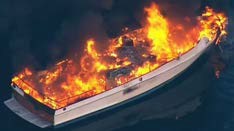 A fire aboard a pleasure craft can happen while at the dock or underway. Devastating consequences can result in either instance.
A fire aboard a pleasure craft can happen while at the dock or underway. Devastating consequences can result in either instance.
The following notes focus on the equipment required and how to deal with a fire.
Fire Safety Equipment
The size and number of fire extinguishers required for pleasure craft depends on the size of the boat.
Portable fire extinguishers carry labels that indicate the size and type of fire that they are designed to handle. See the Safe Boating Guide table of equivalents for fire extinguishers.
 Read the instructions on your fire extinguisher and make sure you understand how it works whenever you purchase a new fire extinguisher and on a regular basis.
Read the instructions on your fire extinguisher and make sure you understand how it works whenever you purchase a new fire extinguisher and on a regular basis.
 Fire extinguishers are useless unless you know how to use them.
Fire extinguishers are useless unless you know how to use them.
Controlling a Fire
If a fire starts, grab the fire extinguisher, activate it and direct it at the base of the flames using short bursts and sweeping the hose from side to side.
If a fire starts while underway:
 Put on lifejackets if not already wearing them.
Put on lifejackets if not already wearing them.
If the fire is located in the engine space, stop the engine, shut off the fuel source and close the engine space ventilation.
Position your boat so the fire is downwind.
Use fire extinguishers, fire buckets, or a fixed extinguishing system, if installed, to control the fire.
If the fire is not quickly put out, make a distress (Mayday) call on your radio.
Consider evacuation if the fire is spreading quickly or cannot be brought under control.
 Safety first. In some cases the best course of action is to call for help and abandon the vessel if the fire is not quickly contained.
Safety first. In some cases the best course of action is to call for help and abandon the vessel if the fire is not quickly contained.
Collisions with other boats or objects such as docks, are the most common type of minor accident that boaters have.
Collisions can be avoided by:
 Keeping a good lookout
Keeping a good lookout
Paying attention to steering
Carefully reading the charts to check your position
Maintaining a safe speed
Reducing speed when visibility is poor and after heavy rains
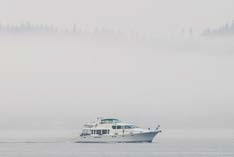
Check up-to-date Canadian Hydrographic Service charts for information on local hazards
 Knowing the local hazards reduce the possibility of running aground or running into something
Knowing the local hazards reduce the possibility of running aground or running into something
 Checking with local boaters, law enforcement officers or marina owners will also give you an idea of local hazards
Checking with local boaters, law enforcement officers or marina owners will also give you an idea of local hazards
Colliding with Something
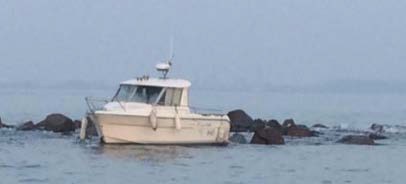
 Stay calm
Stay calm
Ensure everyone is safe and uninjured
Put on lifejackets and PFDs if not already being worn
Immediately check
 the bilge for water
the bilge for water  the hull for damage
the hull for damage
 Call for help if needed – there may be other boats nearby that can provide assistance
Call for help if needed – there may be other boats nearby that can provide assistance
Collision with Another Boat
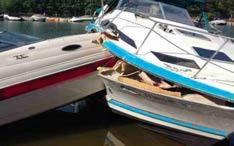
Treat the collision the same way a vehicle collision is treated on land
 Stop and provide the other vessel with:
Stop and provide the other vessel with:
 your name
your name
 your contact information
your contact information  your vessel information
your vessel information
 your home port, your ports of origin, and your destination port
your home port, your ports of origin, and your destination port
 Get the same information for the other vessel
Get the same information for the other vessel

You are required by law to provide assistance to the other boat if this can be done without risking the safety of your boat and the people onboard it
 You are required by law to report the accident as soon as possible to local law enforcement authorities if:
You are required by law to report the accident as soon as possible to local law enforcement authorities if:  damage is more than $1,000 or impacts either vessels’ seaworthiness
damage is more than $1,000 or impacts either vessels’ seaworthiness
 there is serious injury or death involved
there is serious injury or death involved
Running Aground
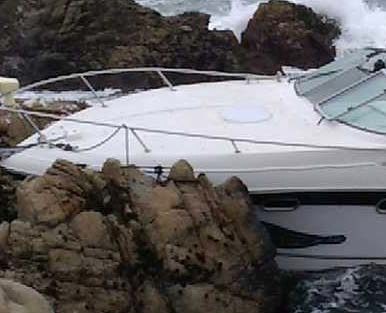
It is not advisable to push a boat off a rock and into deep water.
 There may be a hole in the hull
There may be a hole in the hull
 You may damage the hull
You may damage the hull
To be sure the boat can still be manoeuvred, check the:  Engine
Engine
 Propeller
Propeller  Steering
Steering
If your boat is not seaworthy, you will need to call for help.
 If you are not in immediate danger, make an Urgency call (Pan Pan, Pan Pan, Pan Pan).
If you are not in immediate danger, make an Urgency call (Pan Pan, Pan Pan, Pan Pan).
If you are in serious, immediate danger, make a Distress call (Mayday, Mayday, Mayday).
 Only make a Mayday call if someone’s life is at risk.
Only make a Mayday call if someone’s life is at risk.
Review the information about calling for help.
1.4.5 Towing
Sometimes, due to unexpected changes in weather, an accident or unfortunate breakdown, a vessel will require assistance. One of the most frequent methods of rendering assistance is by towing. Every boat operator should know how to tow and how to be towed.
Before the Tow
Before beginning to tow, the following steps should be taken:
- Use polypropylene as a tow line. It has low stretch, so is unlikely to whip back if it breaks. It also floats, so is less likely to foul the propeller.
 Do not use nylon as a tow line: it has high elasticity and may whip violently if it breaks.
Do not use nylon as a tow line: it has high elasticity and may whip violently if it breaks.
- Everybody on both the towing boat and the towed boat should put on lifejackets or PFDs.
- Aboard each boat, station someone by the tow line with a sharp knife, so that the tow line can be cut in an emergency.
- Check the towing cleats and their fastenings.
 If these appear to be inadequate, pass a line around the boat at the gunwale and secure it there with light lines.
If these appear to be inadequate, pass a line around the boat at the gunwale and secure it there with light lines.  Sharp corners should be cushioned to protect the tow line from abrasion.
Sharp corners should be cushioned to protect the tow line from abrasion.
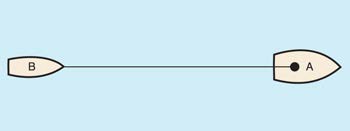 If possible, attach the tow line to a point ahead of the towing boat’s rudder to make it easier to steer.
If possible, attach the tow line to a point ahead of the towing boat’s rudder to make it easier to steer.
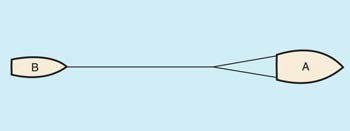
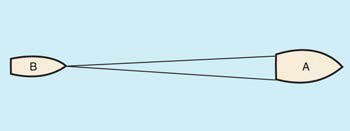 Whenever possible, use a towing bridle to reduce strain on the line and fittings and to improve control.
Whenever possible, use a towing bridle to reduce strain on the line and fittings and to improve control.
or
.
- If available, use a dedicated fitting on the bow to attach the tow line to the boat that is being towed, as it will reduce the tendency to yaw.
- When towing a canoe, pass the bridle over the bow and secure it so that the line leads away from the keel.
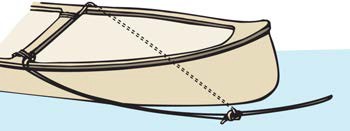
 If this is not feasible, tow the canoe on a short line that lifts its bow partly out of the water.
If this is not feasible, tow the canoe on a short line that lifts its bow partly out of the water.
During the Tow
During the tow, the following steps should be taken:
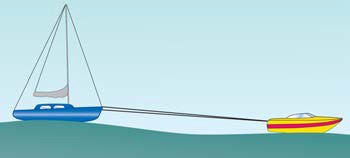 Use a tow line of sufficient length so that the boat being towed is at least as far back as the secondary wave.
Use a tow line of sufficient length so that the boat being towed is at least as far back as the secondary wave.
- Further reduce strain by adjusting the tow line so that both boats meet the waves at the same relative position.
- Post a lookout.
- Tow slowly to reduce stress and to stop the towed boat from overtaking.
- Watch for a breaking tow line that can whip and cause damage.
Entering Restricted Waters or Near a Dock
When entering restricted waters or getting near a dock, the following steps should be taken:
- Rig fenders over the sides of both boats.
- Shorten the tow line to bring the boats alongside each other.
- Ensure that the rigging of sailboats does not become entangled.
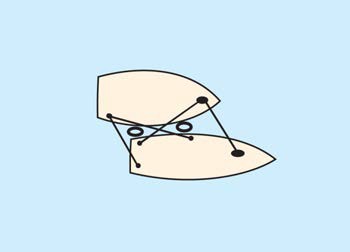 Secure the boats together with bow, stern and spring lines, so that the towing vessel’s stern is aft of the rudder of the towed vessel, to ensure maneuverability.
Secure the boats together with bow, stern and spring lines, so that the towing vessel’s stern is aft of the rudder of the towed vessel, to ensure maneuverability.
1.4.7 Emergency Communications
If the emergency is such that external assistance is required, the marine band VHF radio is the primary safety device. Training on the proper radio protocol will increase the usefulness of this device and is highly recommended.
Shore based facilities along most of Canada’s coastline and inland waterways monitor the marine band radio communications (Channel 16 is the emergency calling channel). These facilities are operated by
 the Canadian Coast Guard (CCG) Marine Radio service
the Canadian Coast Guard (CCG) Marine Radio service
 municipal emergency services such as police or fire departments
municipal emergency services such as police or fire departments
 Royal Canadian Marine Search and Rescue (RCM-SAR) on the BC Coast
Royal Canadian Marine Search and Rescue (RCM-SAR) on the BC Coast
 By other vessels in the area, some of which may be able to provide immediate assistance
By other vessels in the area, some of which may be able to provide immediate assistance
 Remember:
Remember:
 An emergency is a situation where your vessel or people onboard are in extreme danger (for example, your boat is taking on water and you are in danger of sinking or capsizing)
An emergency is a situation where your vessel or people onboard are in extreme danger (for example, your boat is taking on water and you are in danger of sinking or capsizing)
 In the case of an emergency, it is best to use the marine radio to make an emergency.
In the case of an emergency, it is best to use the marine radio to make an emergency.  Monitor Channel 16 (International Distress, Safety and Calling).
Monitor Channel 16 (International Distress, Safety and Calling).
 A Restricted Operator’s Certificate (Maritime)–ROC(M) is required for the operator.
A Restricted Operator’s Certificate (Maritime)–ROC(M) is required for the operator.  VHF is public communication. Use but do not abuse.
VHF is public communication. Use but do not abuse.
It is good practice to add a “How to make an Emergency Call” sticker near the radio with the vessel’s information (Vessel name, licence number).
In an emergency situation, if the radio has a Red DISTRESS button protected by a cover, lift the cover and hold the button down for 5 seconds, then make a verbal Distress call on channel 16.
 ONLY do this in a real emergency.
ONLY do this in a real emergency.
Calling for Help
When in extreme danger use your VHF radio channel 16 and say “Mayday” —“Mayday” — “Mayday.”
If you need help but are not in immediate danger (for example, your motor has quit and you cannot reach shore), use channel 16 and say “Pan-Pan” — “Pan-Pan” — “Pan-Pan.”
In both scenarios, give the following information:  the name of your boat
the name of your boat
 your position
your position
 the nature of your problem
the nature of your problem  the type of help you need
the type of help you need
Post these guidelines near your radio.
Emergency Maritime Radio Procedures Cards (downloadable PDFs)  CanBoat / NautiSavoir
CanBoat / NautiSavoir
II H am.m:IIWSIDll&DllllWlllll
—
BEFORE DEPARTING
IM)llllllllllal–llllNllilll
·–
………… ………
.,..._,.
,..
.-.-u-..-i�w-, —U..l,lplMII
_.._,_,._,
………….. ….
……..,..c.u.,1.1.1.1…..d.l.l.d.:.td.arei 1
.lllll’llfil:U4Diftil’-
-,.._-,-tPU•-C-‘-
.,.•.m..,.-.V.S.?.
Callilat,al’lllliMt-‘rai$1″
,……….
……_. …kf:M….
……,,…..,“”-rtr>
Foruse onlywhenIn gtn1? and lmmlm!nl danpr and
IMMEDIATEASSJ.STANCE IJ re.quire.ti.
I. Seod DSC Alefl
- s..dddlr,S! callonVHFCH16
- Acti.. te EPIRB
Swit hl1YHFCtlll_. trtnlallil di,tn.u:YI Ml IIMIUII’:
-··
MAYDAY MAYDAY MAYDAY
hllSI$(�_,,…3111181)
M.\’t’CU.Y�bJmRl�ll9MWSlll”l”lbel’
IATUREIJ”-CISJ-!i!ESS———-
AfJUQUIIIEO
111UY8lRor F’tASDliSo•elW!I
IIDlhidt ,1 VIIFCftlflgl. undtMlirims1111•
2112lllJ:II at 1Um111i1Jbll– tf ctllllllic-‘1ilL
-••———-
 QmadaIIIMSl3’1�$-■Ull-c.■8-!0.•-�•–■llrarl9-■l.n,-■dr .. 11,_.1u1_..,,h’.’ftllPil.PdH.I.Pd Pd.St…\. l:laslfaardb:lt.SI..11111’1C..liillriWt St.In\C.t&.11Rlllk.TtilklllWOOlIOISUClt.l.juur.tl.UAMPUOFOIS111ESS l’IIOCEOURE{MA’flJAY}l’Ndiltlw.-llllllN�”—-“IIA’l’llA’f;WA’tllAY,liU,’11lAW, J.illOISVCH.IOGIOLilONSUQL U.UWIO.IISIXllinhlfflffl.,.._41″1M.rlld12:J”Uk S..i.tafa111…,., wai-..,t1�1,….–.aa1mce,4,•lllld.•l.akill0•llltlft.0iiet:DfAMPUOF us,E#CY l’IIOClOURf {PAIiPAN/Actn>ltt EPII.D(ti PlB).., lltibilt dlttctiNs prlnl&d61 btK# body.,…. [PIiiwn-rt111It Illellln’l’l’II Cf111.Elll1111EPIRI Is wt,fbl.witlanteaapointed.-ud………..,.a!!’•csw.i•u.–.a.,,…-..(‘111:”-‘)-.., –)11111$1….._ ……_ ..,._ ……….n-•••’-“…………..–…,_..,……..11t-EARLY ALERT/NSOFSART c….-,,.,.,_ea■c..,”1rfflwttlo…_{-.l-)11M$1…._, ..cancellng a Falso VHF-DSCUlslress Alertl…..•WIIDl1I_AI….U. dll-.AI–■• … _
QmadaIIIMSl3’1�$-■Ull-c.■8-!0.•-�•–■llrarl9-■l.n,-■dr .. 11,_.1u1_..,,h’.’ftllPil.PdH.I.Pd Pd.St…\. l:laslfaardb:lt.SI..11111’1C..liillriWt St.In\C.t&.11Rlllk.TtilklllWOOlIOISUClt.l.juur.tl.UAMPUOFOIS111ESS l’IIOCEOURE{MA’flJAY}l’Ndiltlw.-llllllN�”—-“IIA’l’llA’f;WA’tllAY,liU,’11lAW, J.illOISVCH.IOGIOLilONSUQL U.UWIO.IISIXllinhlfflffl.,.._41″1M.rlld12:J”Uk S..i.tafa111…,., wai-..,t1�1,….–.aa1mce,4,•lllld.•l.akill0•llltlft.0iiet:DfAMPUOF us,E#CY l’IIOClOURf {PAIiPAN/Actn>ltt EPII.D(ti PlB).., lltibilt dlttctiNs prlnl&d61 btK# body.,…. [PIiiwn-rt111It Illellln’l’l’II Cf111.Elll1111EPIRI Is wt,fbl.witlanteaapointed.-ud………..,.a!!’•csw.i•u.–.a.,,…-..(‘111:”-‘)-.., –)11111$1….._ ……_ ..,._ ……….n-•••’-“…………..–…,_..,……..11t-EARLY ALERT/NSOFSART c….-,,.,.,_ea■c..,”1rfflwttlo…_{-.l-)11M$1…._, ..cancellng a Falso VHF-DSCUlslress Alertl…..•WIIDl1I_AI….U. dll-.AI–■• … _
WMS!uk
Distress, Urgency and
Safety Signals
—
MAl’llY_, …….11111allliw.-•
………IIIOtlll……….
_… ……………
IU.Wl.l..T.l.fl.i’.f.-.•.a.a..,.-.,-.,1.11_1,…,._,….,._,.-… HJ•IUl—aSIII–WI•-, …. ……..
…,.
$1CH11t-•ca1■e 1w• .,..a.,•
—■-ut–. ……
·■·■·
,·_-,P·hon–etic A·lpha-,bet_·-
Il ■I
:I l:M:II
Special Purpose Craft
Pleasure craft come in all shapes and sizes. Many are used for special purposes, for example:
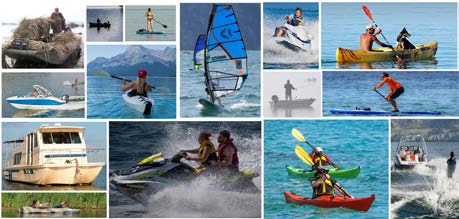
 fishing
fishing  hunting
hunting
 jetskiing
jetskiing
 waterskiing
waterskiing
 canoeing and kayaking
canoeing and kayaking  windsurfing
windsurfing
 houseboating
houseboating
 paddleboarding
paddleboarding
This section focuses on special purpose watercraft and safety challenges they present.
Hunters and fishermen use many types of watercraft to participate in recreational activities; however, many of these individuals do not consider themselves “boaters.”
It is important to remember that everyone using a boat is a boater and must know and follow all relevant regulations, whether that person is fishing, hunting, or involved in some other water-based activity.
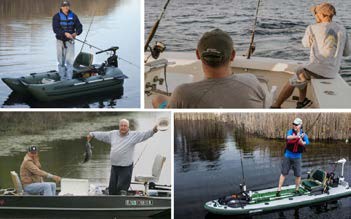 A disproportionally high percentage of boating fatalities occur while people are engaged in fishing from small boats.
A disproportionally high percentage of boating fatalities occur while people are engaged in fishing from small boats.
It is a common occurrence for someone to fall overboard while standing up.
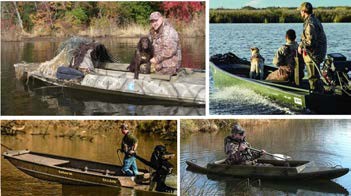 More hunters die every year by drowning or from hypothermia than from gunshot wounds.
More hunters die every year by drowning or from hypothermia than from gunshot wounds.
Standing up in any small vessel while reaching for a decoy or capsizing because of an unbalanced load are some of the most common occurrences.
Waterskiing and other similar sports are a fun activity for the whole family but can be dangerous if certain conditions are not taken into consideration.
In terms of regulations it is a criminal offence to engage in waterskiing, tubing, parasailing, or any other towing activity unless:
 there is an observer on board the towing vessel, in addition to the operator, in order to keep watch on the person or persons being towed.
there is an observer on board the towing vessel, in addition to the operator, in order to keep watch on the person or persons being towed.
 there must be a vacant seat in the towing boat for each person being towed.
there must be a vacant seat in the towing boat for each person being towed.
To state the obvious, a PWC towing a skier, for example, needs to be rated for 3 persons; in the image below, the boat towing the skiers would need to be able to seat 10 people:
 Operator/driver
Operator/driver
 Observer/spotter
Observer/spotter
 The skier/towed individual
The skier/towed individual
 Towing a person is permitted only between sunrise and one hour after sunset.
Towing a person is permitted only between sunrise and one hour after sunset.
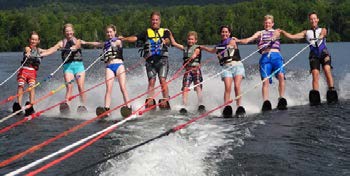
Small boat operators may have additional responsibilities if they are operating certain kinds of craft. Some small boats are high-speed and highly manoeuvrable. Others present a low profile and can be challenging to see.
Personal Watercraft (PWC)
 can be operated in very shallow water; however, the jets can stir up the bottom, destroying aquatic plants and animals.
can be operated in very shallow water; however, the jets can stir up the bottom, destroying aquatic plants and animals.
 should be used in deep water, farther from shore, to preserve the sensitive shoreline environment and show consideration for others enjoying the outdoors.
should be used in deep water, farther from shore, to preserve the sensitive shoreline environment and show consideration for others enjoying the outdoors.
 In most provinces, shoreline protection regulations require a travelling distance of more than 100 meters from the shore.
In most provinces, shoreline protection regulations require a travelling distance of more than 100 meters from the shore.
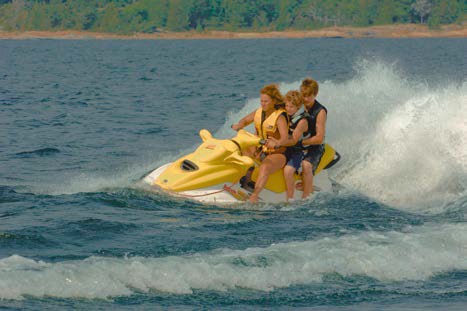
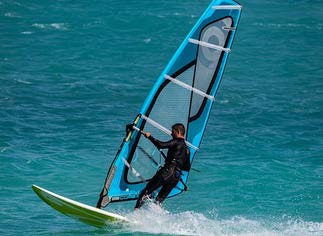 Windsurfers can precision manoeuvring, but should avoid tacking in front of other larger vessels.
Windsurfers can precision manoeuvring, but should avoid tacking in front of other larger vessels.
If the windsurfer is a stand-on vessel, it shall maintain its course and speed until the crossing situation has passed.
Kayaks, canoes, and paddle-boards are very popular vessels for day trips and extended touring.
They are environmentally friendly and allow access to shallow, near-shore, otherwise restricted areas.
This type of vessels sit very low in the water and are not easily seen by other vessels, especially if they are not brightly coloured or paddled by a person wearing a dark-coloured PFD.
Wearing bright-coloured clothing or flying a colourful flag or pennant can help make a kayaker more visible. Kayakers travelling in groups should stay close together to increase the likelihood of being easily seen.
Kayaks and other small, non-motorized watercraft can be the most disturbing to wildlife, as they can approach much closer without warning and cause a panic reaction when spotted. One method for reducing the stress on wildlife is gently tapping the side of the boat to warn of one’s presence and not approaching on a direct course.
Dinghies are frequently used to convey passengers between anchored vessels and shore-based facilities.
Dinghies should be operated slowly within an anchorage to avoid disturbing others with noise and wake. Wake can be considerable if a dinghy is overloaded or poorly trimmed. A slow speed also reduces the possibility of collisions with other vessels travelling within the anchorage. Wearing bright clothes or PFDs increases the visibility of the dinghy and its passengers.
There are things that the operators of human-powered watercraft and other watercraft need to keep in mind. This video from the America’s Boating Channel provides an overview that applies whether you are boating in Canada or the USA.
SHARING THE WATERWAYS
END OF SECTION NOTES – Click here to return to Boater’s Responsibilities




